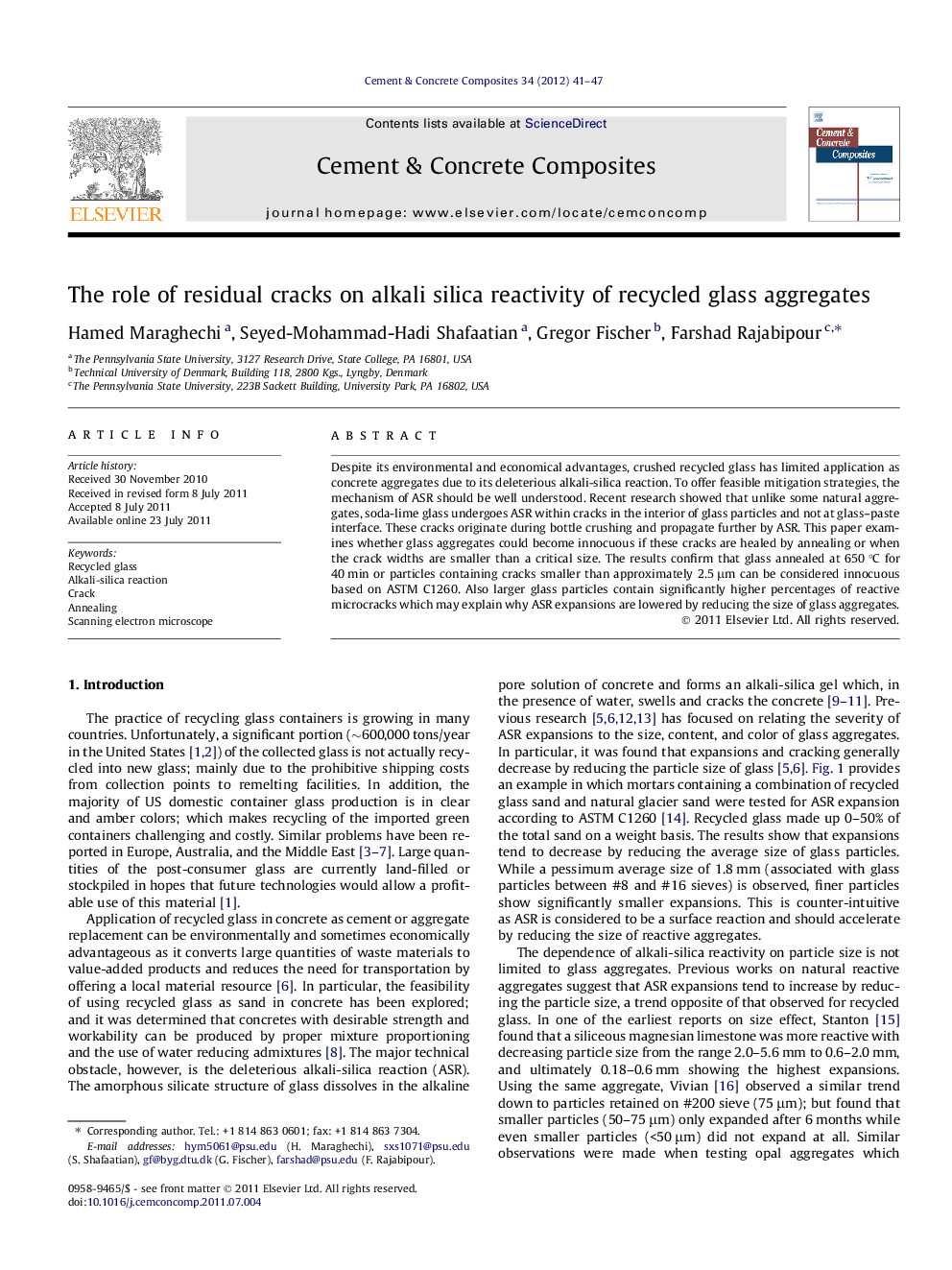| کد مقاله | کد نشریه | سال انتشار | مقاله انگلیسی | نسخه تمام متن |
|---|---|---|---|---|
| 1454971 | 989013 | 2012 | 7 صفحه PDF | دانلود رایگان |

Despite its environmental and economical advantages, crushed recycled glass has limited application as concrete aggregates due to its deleterious alkali-silica reaction. To offer feasible mitigation strategies, the mechanism of ASR should be well understood. Recent research showed that unlike some natural aggregates, soda-lime glass undergoes ASR within cracks in the interior of glass particles and not at glass–paste interface. These cracks originate during bottle crushing and propagate further by ASR. This paper examines whether glass aggregates could become innocuous if these cracks are healed by annealing or when the crack widths are smaller than a critical size. The results confirm that glass annealed at 650 °C for 40 min or particles containing cracks smaller than approximately 2.5 μm can be considered innocuous based on ASTM C1260. Also larger glass particles contain significantly higher percentages of reactive microcracks which may explain why ASR expansions are lowered by reducing the size of glass aggregates.
► Crushed glass cullet is used as concrete fine aggregates.
► Glass cullet undergoes ASR within intra-particle cracks caused by bottle crushing.
► Annealing of glass heals its cracks and mitigates ASR.
► Smaller crack widths are less reactive due to limited mass transport.
► This explains why larger glass particles are more alkali silica reactive.
Journal: Cement and Concrete Composites - Volume 34, Issue 1, January 2012, Pages 41–47